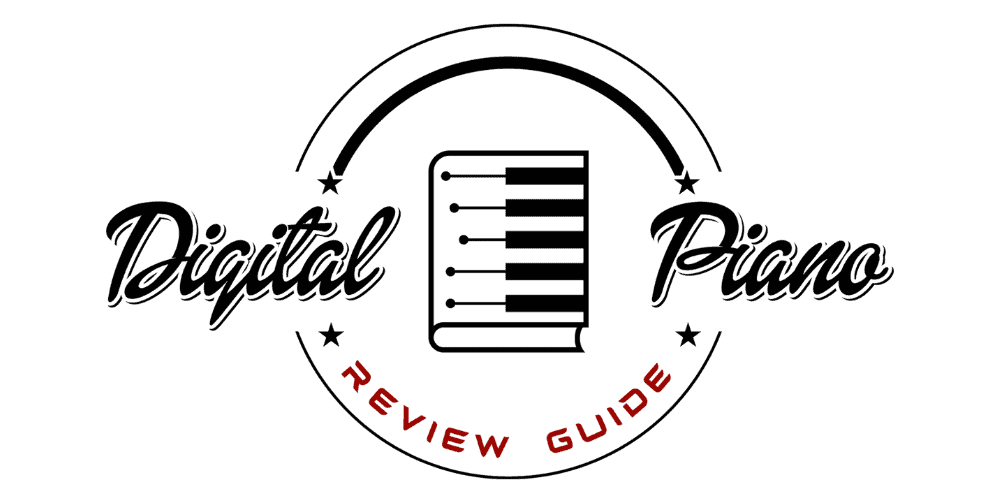Yamaha NP-32 review

In this review, we’re going to talk about the Yamaha NP-32, a relatively new 76-key digital piano from Yamaha. It’s a light, portable keyboard with a few really cool features, but I’m also going to talk about what kinds of players can benefit from using this keyboard.
Other keyboards worth mentioning and comparing to this one are of course the NP-32’s predecessor (the Yamaha NP-31), the very popular Yamaha P-45, the Yamaha YPG-235, and the Yamaha NP-12. The Yamaha NP-12 and NP-32 are part of the Piaggero series, which offer trademark Yamaha sounds, touch, and feel on a lighter scale for a reasonable price.
Because this keyboard is at a lower price, the range of players it’s directed toward will be higher. If you’re looking for a new keyboard and you’re not sure whether the NP-32 is the right fit for you, I’ll give you an overview of the keyboard itself, highlight some specs, compare it to other Piagerro keyboards and other Yamaha keyboards, and talk about your budget and whether this keyboard is worth your hard-earned money.
By the end of this article, you should have a pretty good idea of whether you’d like to pick this keyboard up for yourself or invest your money elsewhere.
Before we dive deep into this keyboard, please use the interactive table below to compare the Yamaha NP-32 to its predecessor (the NP-31), as well as its little brother (the NP-11) amongst other notable keyboards.
| Photo | Model |
|---|---|
| Casio PX-S1100 | |
| Casio CDP-S360 | |
| Yamaha P-45 | |
| Yamaha NP12 | |
| Yamaha P-515 | |
| Yamaha NP32 | |
 | Korg LP-380 U |
 | Yamaha DGX 670 |
Breaking down the NP-32
Let’s talk about how the Yamaha NP-32 looks.
First off, it really clean. It’s thin, minimal, and it can come in black or white, depending on your preference. I prefer my keyboards to have a darker color, only because keyboards can get dusty from sitting out in the open (and for some reason, cleaning white keyboards can be a huge pain).
However, the white option looks gorgeous, so if you’re willing to go through the cleaning process, it’ll be worth it for you.

Below, take a quick moment to compare the Yamaha NP-32 to some of the best-selling keyboards currently available for sale online:
| BEST SELLERS |
|---|
| 1) Yamaha P-45 |
| 4) Casio CDP-S360 |
| 5) Casio PX-S1100 |
| 2) Yamaha P-515 |
| 3) Casio PX-S3100 |
If you look at the white version of this keyboard, you’ll notice the oval speakers sitting underneath the mesh covers. They look a little awkward, and because the mesh is see-through on the white version, you can see everything.
On the black version, the speakers are hidden and you can’t really see what’s going on down there unless you shine a light through the mesh. The NP-32 has a little red line running across the top of the keys that looks pretty fancy for a relatively inexpensive keyboard. It’s a nice touch and adds a little highlight to the overwhelming black and white color scheme.
There are only a few buttons, and I’ll talk about what they do in a second, but because there aren’t many, the keyboard has a really minimalistic, simple aesthetic. This can be really attractive to a lot of people who prefer the clean look. I personally like my keyboards to be covered with buttons, knobs, and sliders from head to toe. But that’s just because I’m a fan of old school synthesizers. But there’s beauty in both the complex and the simplistic.
And I would describe this keyboard as simplistic all throughout.
The keys are light. They’re soft graded, and sensitive to touch, so that means that while it may not feel like playing a grand piano, it can still offer the same dynamics.
So, why does this keyboard only have 76 keys? At first glance, it may seem like an odd number; only twelve shy of the full range. On top of that, it would seem like a portable keyboard should have 61 or even 49 keys, right?
Well, Yamaha actually does offer a 61-key version of this keyboard, and they call it the NP-12. However, for the buyers that want similar functionality and options as the NP-12, but want more keys (in an effort to inch closer to the full range of 88), this is a better and more ideal keyboard for your tastes. And despite adding 15 more keys in total to the top and bottom of this keyed, this keyboard remains highly portable.
In fact, this keyboard only weighs about 12 pounds, so Yamaha probably wanted to make something that was almost a full range but still short enough to easily carry to and from home (as opposed to a heavier 88 key digital piano).
How Does It Sound?
While the keyboard itself feels light to play, it does sounds great. The speakers are 6W each (there are two of them) and it gets surprisingly loud, especially when you play it at higher volume.
With a 64-note polyphony, you can play most compositions without getting dropped notes, although if you get really wild and hit a bunch of notes over and over while holding the sustain pedal, you’ll eventually lose some notes.
The grand piano sound is sampled from a Yamaha Concert Grand, and while I’ve heard better, I was pleased with the way it comes alive when you play loudly, and how it dies down well with soft keystrokes. The sensitivity allows for some pretty nice dynamics, even though the keys are indeed lightweight. Some players prefer practicing on lighted keys (ones that you’d find in the Casio LK-280, for example) because it forces them to adjust the dynamics more severely.
As with a lot of the keyboards in the Piagerro series, the sounds are extremely limited once you get past the grand piano sounds. However, if you want to start learning piano and you want a really good grand piano sound (and don’t care about the other sounds) you’ll be set with the NP-32.
The NP-32 does have a few extra sounds that are worth noting here. The first E. Piano sound is kind of tinny—it’s more of a bell sound than a piano, but it still sounds pretty good.

The second E. Piano is really full and warm, and it is definitely more mellow than the first sound. I prefer it to the first E. Piano because it has a wider range in terms of volume consistency, whereas the first E. Piano drops out in the low octaves.
The organs are fun to play with, but they’re not realistic in any way. They definitely sound like digital organs and do not feel authentically sampled. You can tell that the effort was put into the grand piano sound, because it’s the most authentic digital sound on the NP-32.
The strings feel compressed and tight, probably because they need to be the same volume at every note and octave. The strings feel very synthetic, but that’s not necessarily a bad thing. They’re great for layering underneath the piano, and you can do this by pressing a layer button to have two sounds going simultaneously.
The vibes sound beautiful as well. Yamaha has totally nailed the marimba/vibes sound, in my opinion. There must be an easy way to simulate that sound, because it sounds more realistic than some of the other sounds on the NP-32.
There’s also a harpsichord sound in case you want to play like Mozart.
Notable Specs
Here are some other features on the NP-32 worth mentioning:
- Demo songs for listening
- Recording (single track)
- Playback
- Metronome
- Master Volume
- Tempo Control
- Custom Tuning
- 1 Audio Output (headphones)
- USB to Host
The USB to Host option is always a great benefit. It allows you to connect to a computer in order to use it to control your DAW (Digital Audio Workstation) or connect to learning and performance apps and plugins that can help you learn as you play.
How Does it Compare to Other Keyboards?
Like many keyboards in the Piagerro series, the NP-32 is lightweight, easy to use, and perfect for people who don’t want or need a lot of options. The NP-12 is almost identical to the NP-32 in terms of features, sounds, options, and look and feel.
Yamaha NP-32 vs Yamaha NP-12
However, the NP-12 is a 61 key keyboard. As a result, it’s lighter than the NP-32 and a little more portable. It seems like the extra money you’re spending on the NP-32 is for the extra key range. Other than that, they are pretty similar, with a few power usage differences.
So, is this keyboard an improvement on the NP-31? One of the main differences is that the NP-31 only has a 32-note polyphony. For a keyboard with 76 keys, this can be an issue. That means you can only hit 32 keys before other notes begin to drop out. The buttons are also a little clunkier on the NP-31 and they’re round instead of rectangular. The sounds are not quite as good, although they’re still fairly nice overall.
Yamaha NP-32 vs Yamaha P-45
Now that we’ve looked at two other Piagerro series keyboards, let’s veer away from that series and see how the NP-32 stacks up against the P-45. Well, the Graded Hammer Standard action on the P-45 is amazing compared to the NP-32. But the sounds are about the same, and it also has a 64 note polyphony.
However, this keyboard has a wider range at a full 88 keys. Because of those extra features, the P-45 is a little more expensive than the NP-32 and the price starts to head out of the beginner range and more into the intermediate. For those of you who like the sound of the NP-32 but need the full weight and range, the P-45 is for you.
Yamaha NP-32 vs the Yamaha YPG-235
Now, let’s look at something completely different: the Yamaha YPG-235. It’s part of the portable grand series. This means it has learning functions, a few hundred voices, recording and playback, effects, and an LCD screen to visualize what sound, song, or style you’ve selected.
This keyboard is kind of hard to compare to the NP-32, which is simplistic, but much more professional looking. The aesthetic of the YPG-235 is lacking somewhat, too. It’s multi-colored, very plastic-looking, and has a lot of buttons.
What the YPG-235 lacks in style, it makes up for in features and options. It has 76 keys, but several hundred more voices to choose from, and most of them sound really cool. If you’re looking for something that’s more versatile and you don’t care about navigating through a lot of features and sounds or how the keyboard looks, the YPG-235 might be for you.
But is the NP-32 Worth it?
The NP-32 is really great for beginners, but it doesn’t have the same learning functions other keyboards have. It’s limited on sounds, but it feels good and its grand piano sound is well made.
It’s a light keyboard, which can be a benefit to musicians on the move. It’s not a very expensive keyboard either, and you can use it with your computer if you want to.
For the price—and certainly if it meets your personal needs—the NP-32 is worth it. But if you’re worried about limitations, you may want to consider something like the Yamaha P-45 or even the P-115.
RATING: 3.7 out of 5 stars
Please “like us” on our Digital Piano Review Guide Facebook page.
You Also Might Like:






